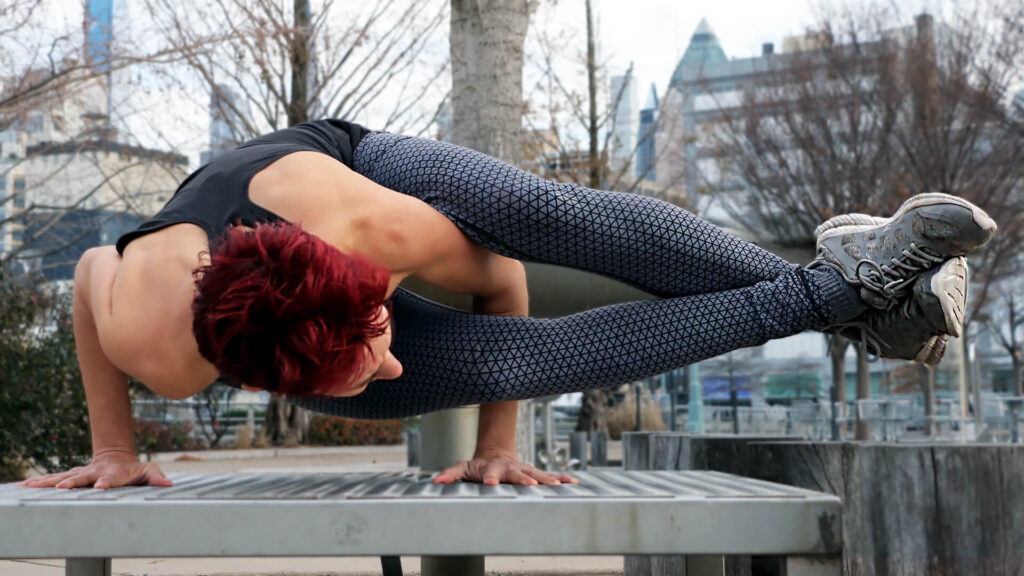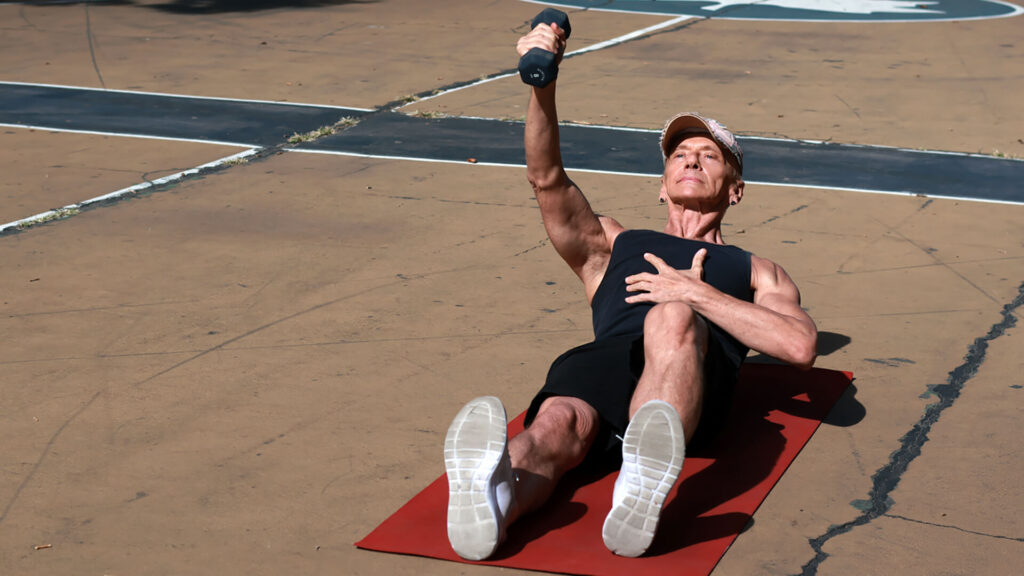
Can yoga build muscle, and does it count as strength training? It’s a question many new yogis ask—and for good reason.
You love the idea of a mindful, feel-good practice, but you also don’t want to lose strength, tone, or the benefits of your gym workouts. Things like building muscle, burning fat, strengthening bones, and revving up your metabolism still matter.
So, does yoga count as strength training?
The short answer: It depends.
Yoga can absolutely be strength training. But it really comes down to the style you practice, how you approach your poses, and how consistent you are.
A strong, flowing Vinyasa practice?
Yes, an athletic Vinyasa can hit all the marks—strength, cardio, flexibility, and control.
Just take a look around a Vinyasa class. You’ll see plenty of fit and athletic practitioners who’ve never touched a weight rack. They’re using their own body weight as resistance, and that’s really what strength training is: working against resistance.
Going back in time, yoga is actually one of the original forms of functional fitness. It trains your body to move better, not just look better.
Why Yoga Works for Strength Training
There are three main ways our bodies build muscle:
- Progressive Overload
- Metabolic Stress
- Mechanical Damage
And yoga, when practiced intentionally, can support all three.
1. Progressive Overload – The Smart Way
In the gym, progressive overload means lifting heavier over time.
In yoga, it means making a pose more challenging or holding it longer.
You start with something simple—like Knees-Chest-Chin—and work your way up to a full Chaturanga. Then add a single leg lift, repeat the movement, or slow it down.
All of that increases the time your muscles are under tension—and that’s how you build strength.
2. Metabolic Stress – Feel the Burn
Ever been in Chair Pose for what feels like forever? That’s metabolic stress.
It’s caused by waste products building up in your muscles while they work.
An athletic Vinyasa or Power Yoga class delivers plenty of this burn and signals the muscles to get stronger.
Something like Yin Yoga focuses more on deep stretching and won’t have the same strength-building effect.
3. Mechanical Damage – Sounds Scary, But It’s Natural
Muscle growth often comes from tiny, microscopic tears—called mechanical damage.
In yoga, we create the same effect during slow, controlled movements—like lowering through Chaturanga or folding slowly forward.
The best part? It’s far gentler on the body than heavy weight training—and still highly effective.
So yes—yoga can absolutely build muscle and strength.
If your goal is a toned, sculpted, functional body, yoga is an amazing way to get there.
It works your big muscles and hits the smaller stabilizers that protect joints and improve movement efficiency.
Yoga also builds muscular endurance. Holding poses or doing flows challenges multiple muscle groups at once—just like compound lifts in the gym.
And because yoga stretches as it strengthens, you’re less likely to end up sore or stiff.

Want to Turn Your Yoga Into a Strength Session? Try This:
- Focus on power poses like Chair, Warrior variations, High Lunge, Boat Pose, Chaturanga, and Arm Balances
- Use pose progressions – start easy and increase difficulty over time
- Increase time or reps if you’re not ready to level up the pose
- Maximize muscle tension by moving slowly, especially in the eccentric phase
- Keep your flows strong and steady – less resting, more intentional transitions
- Add resistance bands or light weights for an extra challenge
Final Thoughts
So… does yoga count as strength training?
Yes, absolutely—when you want it to.
With the right approach, yoga can help you build strength, tone your muscles, and move with more ease and power in your everyday life.
And hey—if you don’t want to choose between yoga and traditional strength training, you don’t have to.
In our fitness yoga program, we combine the best of both worlds—adding resistance bands to make the practice even stronger.
So, roll out your mat… and start lifting yourself.
🧘♀️ Found strength on the mat? Let’s take it deeper.
Core strength is the foundation of almost every movement—on and off the mat.
Want better balance, posture, and power?


































